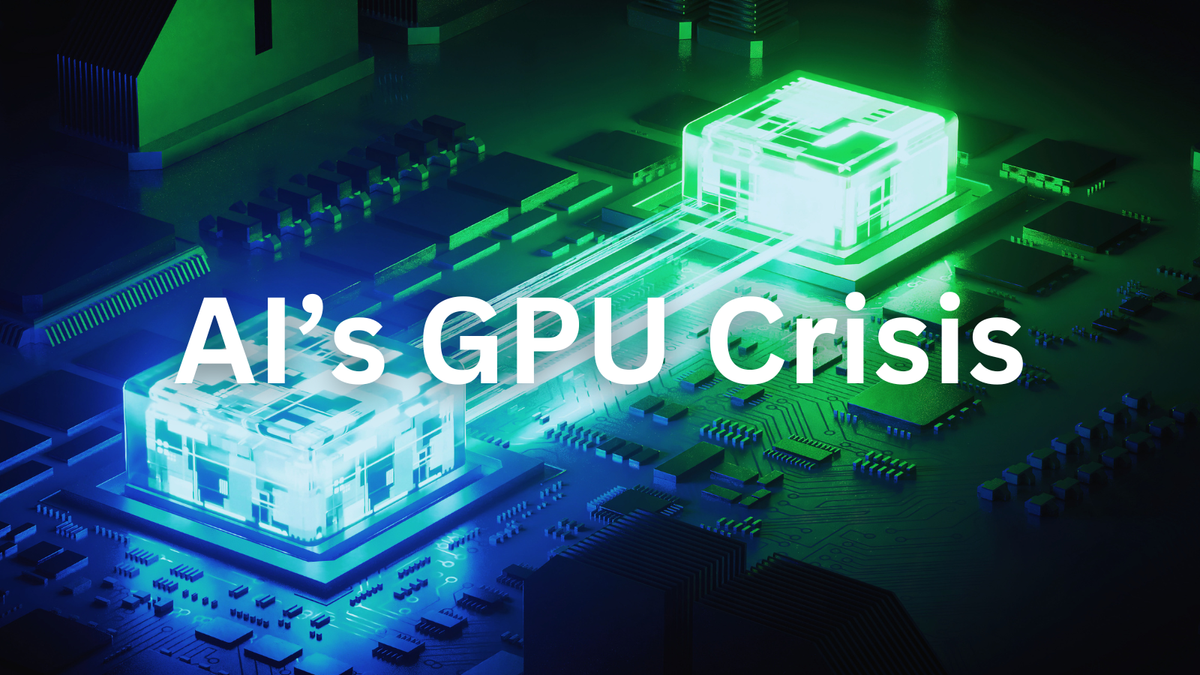AI’s GPU Crisis: Are Analysts Getting It Wrong on Nvidia?

While some analysts predict AI chip demand will slow, Meta and OpenAI are saying the opposite—they can’t get enough GPUs. Meanwhile, Nvidia’s stock has plunged 26%, fueled by concerns that AI models like DeepSeek could reduce GPU needs.
But here’s the catch: distilled models like DeepSeek can only exist if a larger, more powerful model is trained first—and that requires massive amounts of GPUs. Are analysts underestimating AI’s long-term hunger for chips?
Let’s break it all down.
Meta and OpenAI’s GPU Crisis: Demand Is Still Surging
At Morgan Stanley’s Tech, Media & Telecom 2025 conference, analysts reported that both Meta and OpenAI are struggling with GPU shortages:
🔹 Meta: GPUs are critical not just for training AI models but also for ranking content, ad recommendations, and real-time AI processing. Multiple teams at Meta are still waiting for GPUs to complete their work.
🔹 OpenAI: The AI leader said its GPU supply is “completely saturated”, meaning it can’t expand AI access fast enough at reasonable margins.
Despite concerns that AI chip demand might shrink, these companies are spending billions on AI infrastructure—Meta alone plans to invest up to $65 billion in AI in 2025.
If AI demand were truly slowing, why are the biggest players still scrambling for GPUs?
Why Models Like DeepSeek Still Depend on Massive GPU Power
Some investors fear that AI models are becoming so efficient that they won’t need as many GPUs, especially after Chinese AI startup DeepSeek demonstrated a competitive model using fewer chips.
However, this assumption misses a key point:
✅ Distilled models like DeepSeek can only exist if a larger, more powerful model is trained first.
✅ Training these massive foundation models requires enormous GPU clusters.
✅ Even after distillation, AI models still need GPUs for inference at scale.
So while DeepSeek’s efficiency is impressive, it doesn’t eliminate the need for large-scale AI compute infrastructure—it just shifts where the demand is concentrated.

Why Nvidia’s Stock Is Falling—And Why It Might Be a Buying Opportunity
Despite Nvidia’s dominance in AI chips, its stock price has dropped 26% since January, as investors worry about:
📉 AI chips becoming less necessary if models require fewer resources
📉 Trade conflicts disrupting supply chains and raising costs
📉 A potential economic slowdown reducing corporate IT spending
But here’s what many are missing:
🔹 Nvidia’s revenue grew 114% in 2024, and net income soared 145%—proof that AI demand is still thriving.
🔹 Meta and OpenAI’s GPU shortages suggest AI compute growth is far from over.
🔹 With a price-to-earnings (P/E) ratio now at 37, Nvidia stock is far more attractive than earlier this year.
With AI still in its early stages, this could be a prime buying opportunity for long-term investors.
Final Thoughts: The AI Chip Race Is Just Beginning
While analysts debate whether AI chips will maintain their value, companies like Meta and OpenAI are still scrambling for more GPUs. If anything, the AI boom is just getting started—and Nvidia’s long-term dominance may still be intact.
🚀 Are analysts underestimating AI’s GPU needs? Will Nvidia bounce back? Let’s discuss on X(Former Twitter)
References:
- Quartz, Meta and OpenAI Say They Don’t Have Enough AI Chips, March 12, 2025.https://finance.yahoo.com/news/oracle-stock-buy-093400832.html
- Motley Fool UK, Nvidia Stock Has Crashed 26%. Time to Buy?, March 12, 2025.https://uk.finance.yahoo.com/news/nvidia-stock-crashed-26-time-171100839.html?guccounter=1&guce_referrer=aHR0cHM6Ly93d3cuZ29vZ2xlLmNvbS8&guce_referrer_sig=AQAAALDHshLpee5G9qVZS6Ix8ALLPUzgT05aMgqSrW_l5DzHa6FtJm8jVSrhGwdjFTFxmK2zPRJZtleYasgaWZKbJer8DiN8qyL5qcEw7c3BxbJrTfVXc618XdjciF4RTiUxU-UH_Cm3La_xaI4s61FR_bYNySYWHcWBZ3OBE_QkM_Wg



